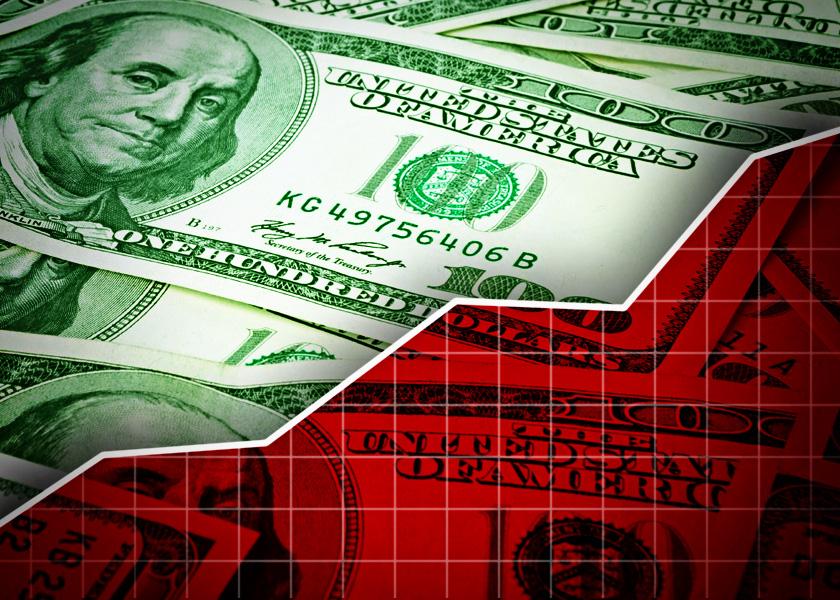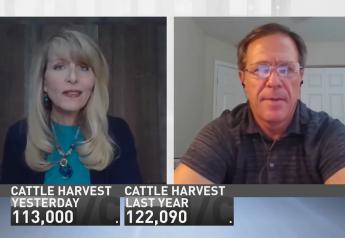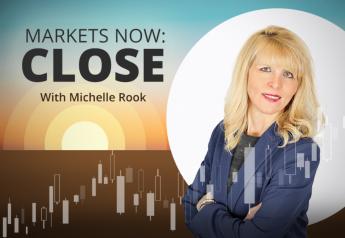New CoBank Report says Federal Reserve is on the 'Horns of a Dilemma’

The U.S. economy outperformed many economists’ expectations in 2023 and into the first quarter of this year, thanks to high employment numbers and consumer spending.
But Rob Fox, director of the Knowledge Exchange Division at CoBank, told AgriTalk Host, Chip Flory, there are worrisome clouds on the horizon. Namely, unruly inflation is not cooperating with the Federal Reserve’s efforts to tame it.
“Inflation numbers are not coming down as fast as they’d hoped,” Fox said. “The Fed has said as much that inflation is going to be a little bit higher for longer.”
Continued, high inflation contributed to the theme and title of CoBank’s new report released last week, “Sticky Inflation Puts Fed on the Horns of a Dilemma.” The report can be read here.
“The horns of the dilemma that I'm describing is that our economy is doing better than what everybody or a lot of people thought,” Fox told Flory on Monday. “Most people, economists, at the end of the year figured, ‘Hey, we're probably going to have a recession. We've gone through the highest, fastest rate-increase cycle in the past 40 years. It's almost impossible that we don't have a recession.’ Well, as it turns out, we've avoided a recession, we're doing much better than people thought,” he added.
Clouds On The Horizon
But Fox said some metrics are deteriorating and the Fed is watching them closely.
“For example, if you look at the broader unemployment numbers, and you include people who consider themselves to be under-employed, those numbers have been creeping up for the past year,” he said.
“Job openings have been declining for the past 18 months. Fewer people are quitting jobs, because they know it's harder to find one,” he added.
Along with that, Fox said that real disposable income growth – which drives consumption and is the biggest part of the economy – has been trending downward for the past 18 months.
He cited information released by the Federal Reserve Bank of Atlanta in its weekly GDP forecast, called GDPNow, as another indicator that there are cracks beginning to show up in the economy.
“At the beginning of February, they predicted that the Q1 GDP for the year estimate would be 4% today, and (instead) they're seeing 2.4%,” Fox said. “So, not bad, but a definite deceleration is happening right now.”
Wildcards In The Deck
In addition, he highlighted some wildcards that the Fed is monitoring:
Oil prices: They are approximately $90 a barrel now, and economists say they are likely to hit $100 by mid- to late summer. “That would be a big damper on the economy,” Fox said.
Federal debt: Fox said the federal debt is out of control “That’s driving up borrowing costs for everybody,” he said. “That's driving up market interest rates, without the Fed having to do anything. So, federal spending is taking care of those rate hikes for them.”
Stock market: Fox said he sees similarities between now and what happened when the dot-com bubble burst in March 2000. “That bubble bursting back in the day was one of the main contributors to a recession the following year,” Fox said.
How is the Federal Reserve likely to respond in the near term?
“My bias today, right now, is that they're hoping to push this economy stronger and crossing their fingers that within the next couple of months, this inflation doesn't get worse than it is.”
Fox told Flory he believes the Fed will continue on its stated path to making three cuts to interest rates in 2024, unless some extenuating circumstances arise.“You know, we've seen a lot of crazy geopolitical things going on, and you never know, but the Fed rarely changes its stated policy,” Fox said. “I'm an outlier in the world of economists here, but I'm sticking with this position.”
Despite the national election being less than eight months out, Fox said he doesn’t expect that to influence the Fed’s decision.
“In my mind, they completely ignore it because as we know, these cuts take some time to take effect, and that won’t happen until after the election,” he said.
For more AgWeb articles, see:
Gulke: What's Causing All the Volatility in Commodity and Financial Markets?
Why Did Grains Give Back Friday's Gains? Will Selling Escalate into Month End?
Infrastructure Woes To Watch: Potholes Plague Global Ag Trade
The AgriTalk discussion between Fox and Flory is available here.







